


The process of choosing ideas for projects, evaluating them, and implementing them within the school framework
The definition of "entrepreneurship education" from Galit Zamler's perspective refers to imparting the knowledge and skills required for success today and doing so in a supportive and encouraging environment from an early age while experiencing the entrepreneurial process.
Entrepreneurship education involves theoretical knowledge, practical experience in developing projects, encouraging self-esteem among students, and enjoying the process.
During the entrepreneurship education process, the teacher serves as a mentor to the students.
The process outlined here is based on one we went through with a group of third to fifth-grade students from the Mordei HaGetaot School in Israel. These students chose the elective course in entrepreneurial leadership and attended the Entrepreneurship for Kids program.
The goal is to allow students to raise project ideas and realize them, if possible. This way, the students could experience the process of being entrepreneurs. Students had the opportunity to go through all the stages that entrepreneurs go through, including concept, design, and implementation.
The process that the children experienced is displayed here. You can see the many ideas for projects that the students came up with, the reasons for abandoning some of them, and how initial thoughts have been changed due to a design thinking process.
Step 1 - Exposure to Various Venture Ideas
The first meetings dealt with 'Who is an entrepreneur?,' 'Entrepreneurial Skills,' and 'Learning From Others' Experience.' Students were exposed to a wide variety of different types of projects: social, business, and social business. Also, they were exposed to children's and older people's projects, technological ventures and non-technological projects, etc.
The purpose of presenting various projects and stories about entrepreneurs was to awaken the spark in each of the children to dare to come up with ideas for projects, even if they sound entirely unrealistic.
By revealing students to different ideas, they become more open-minded. It develops entrepreneurial thinking, which encourages them to be aware of their surroundings and identify opportunities and needs that can serve as a basis for developing an initiative.
Equally important is exposing students to failed ventures, some of which are fascinating ideas that look promising and have the potential for success. Exposure to failed projects is essential and encourages children to dare to try and fail. This helps children understand that failure is OK and probably an inevitable stage of entrepreneurship. Therefore, they should not worry too much about it, but rather accept it with the understanding that failure is part of an entrepreneur's journey to success.
Step 2 - Raising Ideas for Projects by The Young Entrepreneurs
From now on, we will progress in developing students' ideas and integrating knowledge, discussions, and critical thinking. This can be done with additional modules from the program.
After the students have been exposed to various projects, they usually start coming up with their own ideas for the projects.
If they don't have any ideas for projects, we should direct them. We can do this in several ways, depending on the type of project we are interested in.
This stage of brainstorming is called Ideation.
At this early stage, we should accept and welcome any idea that comes to the students' minds, without filtering and any restrictions, as long as they think they can implement it.
The result is a wide range of ideas as happened with this group:
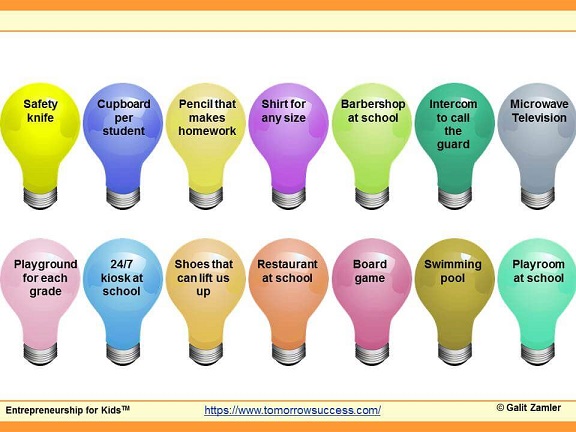
- Microwave that is also a TV
- Intercom to call a guard
- Hairdressing at school
- T-Shirt for Any Size
- A pencil that does homework
- Small cupboard for every child in the classroom
- A knife that is safe to use
- A game centerboard games that the students can play during recess
- Pencil that turns into a pen
- Electric bag
- Buffet at school
- Shoes to lift us
- Kiosk at school
- A yard for each class
Emphasizing the need for an encouraging and supportive environment rather than criticizing one
No matter how weird, infeasible, inappropriate, inapplicable, or even fictional, we will respect all ideas.
We should remember that ideas that were once classified as science fiction have become our reality.
The ideas can be collected in a notebook, a presentation, "bulb lights," or a box.
We will remind students that we want to encourage entrepreneurship and that is why we provide a supportive and encouraging environment. We will ask clarifying questions but not criticize our classmates' ideas.
Consider discussing with the students how someone who proposes an idea and gets rejected by everyone feels? What will it do to others in the class? Would such reaction encourage them to share their ideas or keep them silent? How will this affect our creative thinking?
Step 3 - Explaining the Ideas And Asking Questions
Students who have ideas will write them down on a page (Titled in the EFK program as "The idea is.")
We will explain why it is important for students to present their ideas to others: Sometimes, what is clear to us isn't necessarily clear to others, so we should explain our ideas.
This is exactly what Guy Ben Dov explained to the students during a visit with another group of students to Sidekick.
Students learned from Guy that it wouldn't lead you anywhere if an idea stayed in your head. You have to share your thoughts with others and ask for help and feedback.

However, this stage of the development of an idea for a venture is a great time to work on public speaking and presentation (there is a module for this). We will refer to the tone of speech, the message we wish to convey, and the body language.
We can record the students with their smartphones explaining their ideas, so they would watch later and take notes.
Each student (or group of students) will present their idea to the class. The classmates will ask clarifying questions - the rule is not to disqualify or criticize ideas, but to just ask questions to help the presenter better understand and refine their idea.
The students who pitch the idea do not answer the questions; they only listen. Sometimes it can be funny because we tend to answer, but the teacher will remind us that we are just listening.
As questions arise, the teacher will write them down so that the students can provide answers at the next session.
If students continue to criticize ideas, they will be asked to turn their statements into questions.
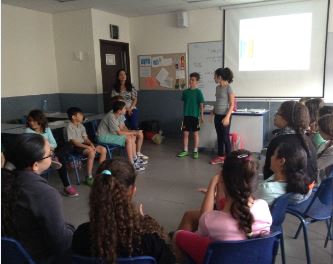
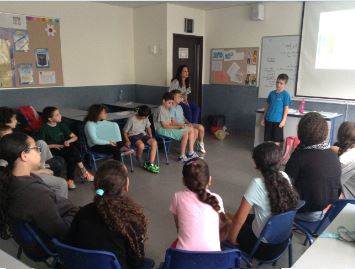
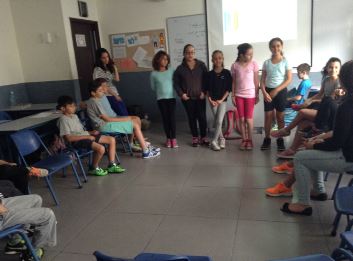
Examples of ideas that came up and questions that were asked

The project: Microwave that has a TV screen on the door
Questions asked:
- How would such a microwave be built?
- Where will the TV be?
- Is the TV on the door or inside of the actual microwave?
- Who watches TV in the kitchen? Who needs this?
- Will the TV work only when the microwave is in use?
- Why do we need a microwave in school?
- Will the TV overheat when the microwave is in use?
At this stage, we learn how to speak in front of an audience, that our message should be clear and concise, to pay attention to our body language - looking at the audience and maintaining eye contact, and that our tone of voice should be clear and confident.
We also learn to listen to others, ask questions, and refrain from answering, even if we already know the answer.
The following week, the young entrepreneur, Lia, provided answers to those questions.

The project: An intercom that calls the guard when someone comes to the school's gate, and the guard is not there. When people come, they will click the intercom and send a message to the guard. The guard will then go and open the gate.
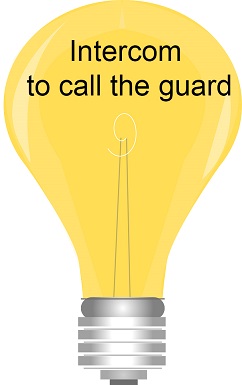
Questions asked:
- How will the intercom call the guard, and from where?
- What will this invention be called?
- How would it work from the technical aspect?
- What device will the guard have?
The young entrepreneur, Maya, replied to those questions:

The project: A hairdresser in the school, so that you will be close and accessible to all students.
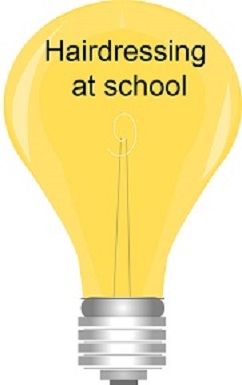
Questions asked:
- Where will the barbershop be placed?
- How will we raise money for the hairdresser?
- What is unique about this hairdresser?
- Who will be the barber?
The project: a T-shirt that fits any size - so that you can shrink and stretch it to fit different sizes, saving money on clothing purchases.
In the end, the project A T-Shirt for Any Size was implemented. Clicking on this link will direct you to the page where the project is explained in detail.

Questions asked
- How can one T-shirt be for all sizes?
- Is it one T-shirt that fits several sizes or several T-shirts that fit several sizes?
- What material is the T-shirt made of?
- What is the purpose of this T-shirt?
- Who needs such a garment? Who is the target audience?
Young entrepreneur, Yair, came back with answers:

The invention: A pencil that does homework
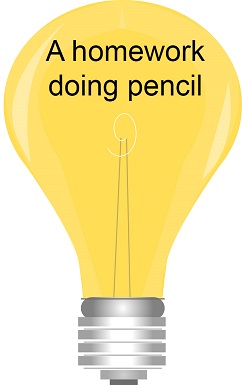
Whoever does not like to do homework will use a pencil with a small device attached. The device will do the homework for the student. The pencil will know how to read the questions and how to find answers and write them down.
Questions asked
- How does the pencil identify the written questions?
- Where does the pencil get its answers from?
- How can the pencil write the answers alone?
Eden, the young entrepreneur, answered all the questions.

The project idea: A cabinet for all
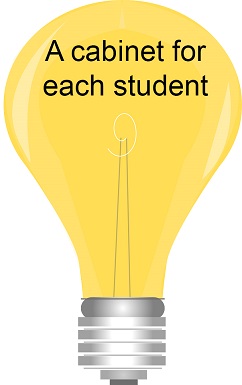
Every student will have a small cabinet in the classroom that they can keep their books and notepads in so that they do not have to carry a heavy school bag.
Questions asked
- Where would the cabinets be located?
- Where would we get funding for every kid to have their own cabinet?
- Why do we need cabinets if we have lockers?
The invention: A safe knife to use
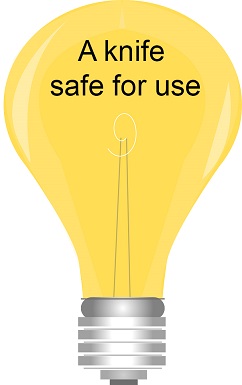
A knife that prevents accidents during its usage. Specifically, a knife prevents accidents when handled by children who are not as cautious or careful.
Questions asked:
- How and when would the safety cover be attached to the knife?
- How would the safety cover attached to the knife on time when needed?
- How can users disable the safety cover to keep using the knife with it?
- Who knows to make such a knife?
The project idea: School playroom
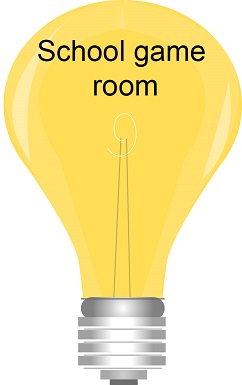
Establish a room in the school with various games for the benefit of students during recess or free classes. The place would include board games, computer games, video games, and more.
Questions asked
- How would the school find a location for the playroom?
- Where would the money for the playroom come from?
- Is there a demand for a playroom?
- Would video/computer games be allowed in school?
- Can cell phones be used in the room?
- Who would supervise and keep order in the game room?
Young entrepreneurs, Shahar and Shira, answered these questions:

The invention: A hybrid pencil-pen
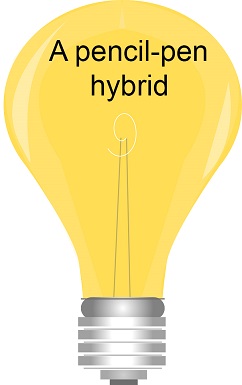
A pencil that can, with a touch of a button, turn into a pen and vice versa.
Questions asked
- How would the pencil tip turn into the tip of a pen?
- Are there two holes in the hybrid pencil-pen? One of the ink and one of the led, perhaps?
The young entrepreneur, Afik, answered these questions:

The invention: Electric Bag
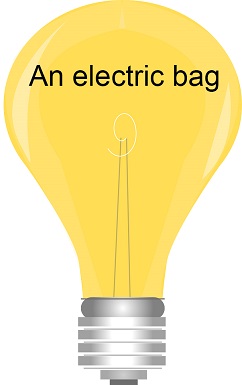
A bag with a small, built-in motor that can easily open or close with the touch of a button. The bag would help people whose hands are full.
Questions asked:
- How would the bag open and close by itself?
- Where would the electric portion of the bag come from?
- Is the bag safe?
The young entrepreneur, Roei, answered:

Initiative: School Luncheonette
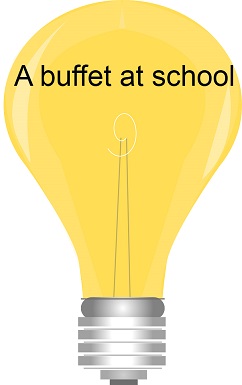
A luncheonette with hot plates for school students. A child who does not have a warm meal waiting at home may come to the luncheonette, as so do students who want to change up their breakfast.
Questions asked:
- When would the students eat there?
- Where would we get groceries from?
- Where would we get a cook?
- Are we prepared for a Kosher certificate? (Roughly 2,000 NIS a year)
Young entrepreneurs, Noah and Geffen, answered these questions:

The invention: Shoes that lift us
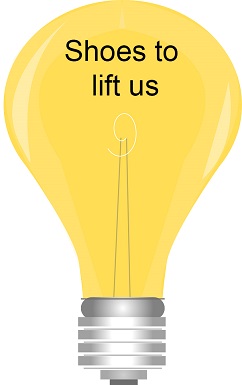
Electrical shoes that would lift us so that we no longer need to climb stairs, and we could arrive at different locations quickly and without much effort.
Questions asked:
- How would the shoes lift people?
- What kind of voltage is required to lift a person?
- Who needs this? (Who is the target audience?)
- Would the shoes work like an elevator? Would the shoes be able to lift people several floors high?
- How would the shoes lift people up sets of stairs?
- What would happen to the shoes when it rains?
The young entrepreneur, Roei, answered these questions:

The project idea: A kiosk at school
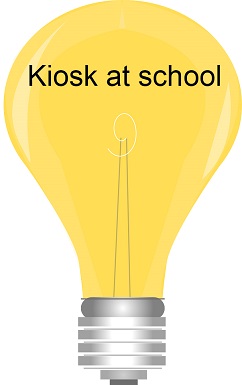
Establishing a kiosk at school that sells sweets and other things that children love.
Questions asked:
- How would we build a kiosk at school?
- Where will the food come from?
- Who will prepare the food for the kiosk?
- Who will operate the kiosk?
- When will the kiosk be open?
The young entrepreneurs, Amichai, Ofek, and Ido, replied the questions:

The project: Plot for every class
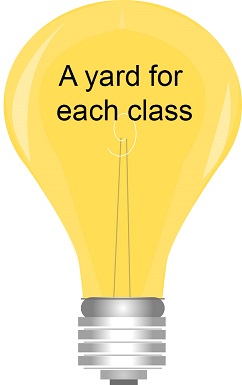
Assigning a plot in the schoolyard for each class to play every day at recess in its own field.
The question asked:
- From where will we get a plot for all classes in school?
Step 4 - Following the Questions Asked
The questions asked caused some of the young entrepreneurs to have second thoughts about their project ideas.
Some of them returned with answers, while others decided not to continue developing their ideas.
It's up to the students alone to decide whether or not to proceed with the idea.
We will offer all students to take part in any project they like, even if the idea is not theirs, but that of their members of the entrepreneurship group. Every student has the opportunity to participate in one or more of the entrepreneurial projects.
Step 5 - Does Our Idea Already Exist?
At this stage, we will check whether the ideas are already being implemented with all the tools available to students that they can use following their age and ability.
If they do, does that prevent us from realizing them? Can we improve a certain idea? If so, how? Are there any lessons to be learned from previous applications of the idea?
Students will also conduct an initial survey to determine their project's needs and/or desires.
It is possible that some students will conclude by this point that others have already applied their ideas, and they have no way to improve them, or that their idea has no market, so they may abandon it.
For example, we found that in 2006 a microwave that is also a TV was sold. Together, we asked ourselves, why do we not see this product on the market? We raised various theories and Lia, the young entrepreneur who raised the idea, decided to improve the existing invention, and thus not to abandon the idea.
We also decided that it is probably not practical to develop electric shoes to lift us because it would take a lot of electrical power to lift a person's weight and it would be difficult for anyone to wear shoes that were so heavy. But, we found that this idea can be implemented in a different way like in this video:
Roy, the student who conceived the idea, decided that the shoes would have sprung on the bottom, and the effect of the quick and easy walk would remain this way.
However, we found that such shoes are already in the market.
The following ideas were abandoned due to the questions raised and the checking results.
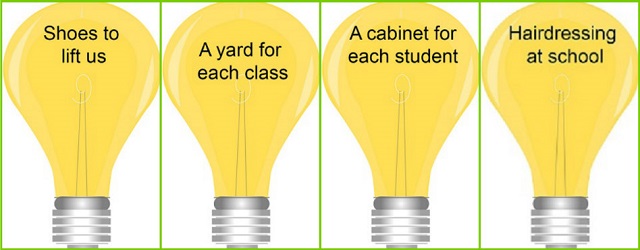
Step 6 - Teams Formulation
As mature entrepreneurs act, we will allow the students to form teams based on shared interests or good communication. Combinations of both are possible.
We encourage the students to work in teams because entrepreneurs have a higher chance of success when working together rather than alone.
There may be a situation where there will be more than one team for the same venture. We will allow that for the students, as probably, in the end, the practical result will be different.
Step 7 - Preparing a Business Plan
As a team, students will work on the business plan (short version) while referring to the following sections: the team members, the idea in one sentence, a more comprehensive explanation of the idea, how was the idea conceived, and what is the issue that the idea seeks to resolve.
Step 8 - Presenting the Idea as a Team
As a team, the students present their ideas, explain how they were formed, and explain the issue they are solving.
If there is a limit to the number of projects that will get developed, we will explain that to the students and draw votes for the most favorite projects.
Step 9 - Getting Approval for the Implementation
It is important to get approval for these projects from the principal before planning them, building models, etc.
The relevant authorities will explain why the permission has been denied and/or ask students questions that will lead them to realize that the idea is not feasible.
In our case, the school principal, Ronni Shasha, and her deputy Sarah Bahar looked at the different ideas for projects, which the entrepreneur students decided to promote, and gave their comments on each idea:
- A microwave that is a TV - a great idea! Do the entrepreneur students know how to put it into practice?
- An intercom that calls the guard - the guard should always be near the gate, and if he is not there, then he is either touring the yard, or in the washroom, and in these cases, there is no point in calling him.
- A T-shirt for every size - a great idea! They should visit a designer/fashion designer for guidance regarding this idea.
- A pencil that does homework -???
- A safe knife to use - a great idea! The student entrepreneurs should brainstorm how to implement this idea.
- A playroom - a lovely idea! But our experience shows that it is challenging to keep it ordered. They should think of a game place for smaller groups so that it is possible to keep an eye on all students involved.
- A pencil that turns into a pen - a nice idea. Do student entrepreneurs know how to implement it?
- Electric bag - there is room to clarify this idea; parents may help to implement it.
- Buffet at the school - the school is not prepared to establish a buffet for students.
- A kiosk at the school - a nice idea, but candy cannot be sold at school. The school PTA does not allow selling goods for money in the school.
Following the feedback from the school management, we were left with the following ideas:
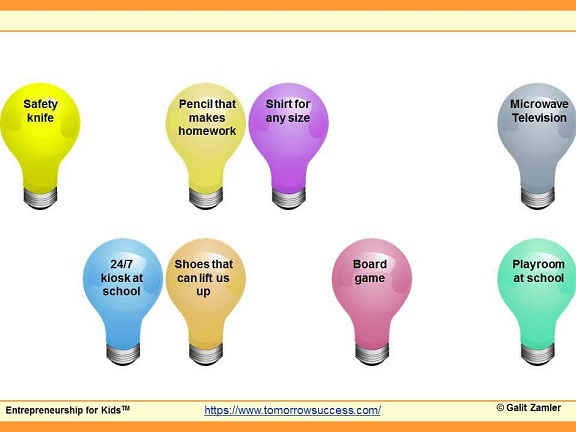
Step 10 - Developing the Ideas
Continue with the business plan (short version) - the vision of the project, who we are and why we would succeed, targets of the project, our unique competitive advantage, the "cake recipe" - what do we need to achieve the project?, And who can help us?.
They will then decide if they can execute the project within the given framework based on the business plan.
We will take the students on a visit to a relevant company/organization or invite a guest entrepreneur for a lecture if possible.
In this case, we held a brainstorming session to decide if we knew how and if we could implement the ideas.
The insights from the discussion:
Ideas that remained within a conceptual framework:
A pencil that does homework - We concluded that theoretically, it is possible to realize the concept. Some devices can read written material and understand the content (like Quicktionary that identifies text and translates it). So in using this technology, one can read the questions and understand them, upload them to Google, and Google will find the answer and then print the answer since there are pens that know to print. This invention is possible to implement, but it needs knowledge and resources that we don't have.
A safe knife - The students showed interest in this idea because everyone was cut from a kitchen knife sometime or saw someone cut. We thought it might be possible to implement this idea by using heat knife blade sensors to identify body temperature (within the finger). Once the knife blade got too close to the finger, a cover would pop up and cover the edge, and the person would not get cut. The reaction speed of the sensors should be very fast. We concluded that this is possible, but at the time, we didn't have the knowledge and resources needed to carry out the project.
A pencil that turns into a pen - We concluded that we have to consult with experts about implementing this technique. We also concluded that in the short time remaining until the end of the school year, it will be challenging to implement the project.
Ideas for which we sought the help of parents and their advice
There was a meeting with the parents of the entrepreneur students during education week. We shared with the parents the process that we went through during the year and asked for their help and advice on how to implement the following ideas:
Microwave that is a TV
The idea was presented to the parents even though someone had already thought of it. We told the parents how we asked ourselves why we hadn't seen it in the market. The parents expressed their opinion on the matter. It turned out that the father of the entrepreneur student could help her in implementing the project, and they decided that together they would try to realize it.
Electric bag
This idea was presented to the parents as well. Some thought it was not necessary, and others liked it. Someone improved the concept by suggesting that it also be implemented in baskets that are sold in retail chains.
Step 11 - A work plan for implementing the ideas
Working on the action plan for realizing the project, so that each member knows what role they play in the project.
Focusing on the marketing aspect of the project - especially in social projects, and those that are fulfilled beyond a model or a presentation.
And - Elevator Pitch - the students will get used to presenting their ideas in a short, convincing, and exciting manner.
Ideas We Put Into Practice
A shirt for any size
(Click on the link to read about the project in detail).
Yair, the owner of the idea, sketched a drawing of the shirt as he saw it in his mind.
The entire entrepreneurial group went to visit with a fashion designer, Rotem Eyal, the owner of the "Boo designer clothes" to hear her professional opinion on the matter.
We asked Orit Barshi, owner of the studio Genesis, for designing dresses to help us make the idea of the shirt for any size into an actual product.
A Playroom
In light of the parents' feedback, we decided to change the original idea. We gave up on the idea of a single playroom for the whole school because we realized that it would be challenging to supervise many students. We also thought it would be challenging to arrange the games and return them to their place each day. We decided to set up a play area in each classroom, and the educators would choose students to look after the order and to share the games between the children.
This is a presentation of the project and its successful execution:
Besides, we decided to implement the idea differently. Participants of the Entrepreneurship for Kids program will help students from grades 1st and 2nd in a day of playing mind games. We asked and got the school administrator's support.
This is a summary presentation of the project:
The original idea for this venture has also changed. Despite the children's affection for sweets, we realized that we needed to change the kiosk's mix. They have to fit the spirit of the school. So, the young entrepreneurs decided to sell sandwiches, popsicles, and drinks. Also, to cope with the constraint of not being allowed to sell for money, we decided that the sale would be for bottles on which there is a refund of deposit.
This is a presentation that summarizes the project:
Step 12 - Conclusions and Lessons Learned
Students will discuss what worked well in a conclusion meeting, what could have been done better, and how?